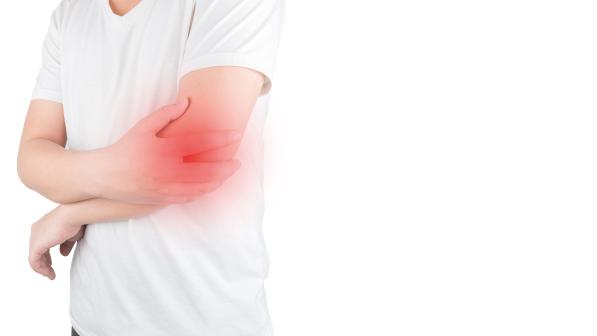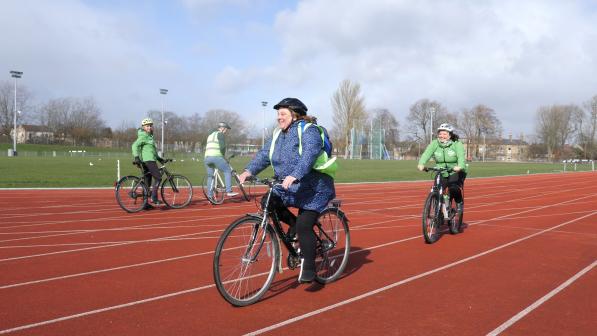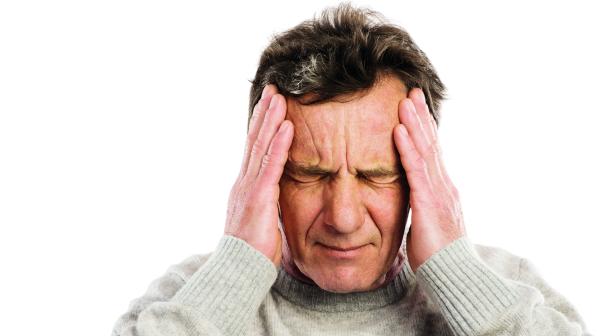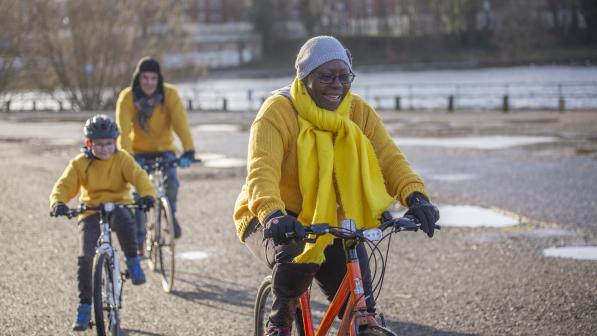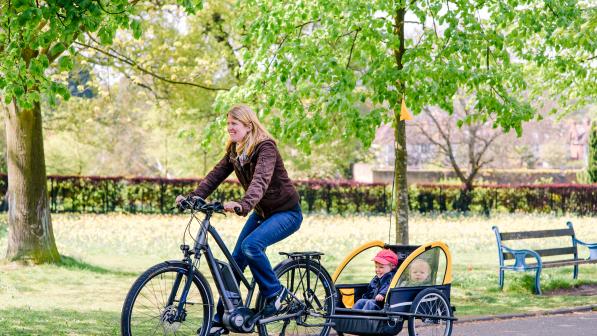Q&As: your health and cycling – muscular

Turbo trainer cramps
Q When winter drives me indoors, I keep myself fit by pedalling away on my home trainer. I do an almost daily session consisting of a 45-minute period of increasing then decreasing difficulty, followed by 5 minutes’ rest and then a similar 30-minute period with a less demanding peak.
My 77-year-old legs are then quite ready in the spring to bowl me along the road again – but it’s bought at the price of frequent, hideous thigh cramps at night during the winter. How can I stop them occurring, and how can I relieve them when they happen?
Barrie Cross
A Leg cramps, due to sudden involuntary muscle contraction, are common. In most cases, the cause is not known although occasionally they may be due to one of several underlying conditions, including abnormal electrolyte levels in the blood (you would usually have other symptoms as well) or a side effect of medication (such as diuretics, Salbutamol or statins).
Stretching or massaging the affected muscle usually provides relief. For calf cramps, straighten the leg and pull up the toes. For cramps in the thigh, try hamstring or quadriceps stretching exercises depending on whether your cramps are at the back or the front of the thigh. Look online for exercises for the specific muscle group affected. Do them daily to try to prevent the cramps.
In bed, stop your toes from pointing downwards by raising your feet up using a pillow (if lying on your back), or hanging the feet over the end of the bed (if on your front).
Most commonly used treatments for cramp lack scientific evidence to back them up. Quinine tablets are usually only advised for frequent severe night cramps disrupting sleep. Some people take extra salt or eat bananas on the basis that cramps are due to an electrolyte imbalance, but it is not clear that this makes any difference in most cases. Dehydration may contribute, so ensure you are well hydrated throughout a ride.
In many instances of exercise-induced cramp, overexertion and lack of muscle fitness are factors. However, from the information you provide, this sounds unlikely to be your main problem, so check the setup on both your home trainer and bike: they should match one another if possible. Make sure your saddle height and foot positioning on the pedal are correct.
In cases of severe, recurrent or persistent cramp despite the above measures, see your GP.
Dr Matt Brooks
First published in the December 2012/January 2013 edition of Cycle magazine.
Hamstring bursitis
Q Since March 2012, I’ve had a hamstring bursa. My GP advised cessation of all exercise plus ibuprofen cream and tablets. After six months, the problem remained. My GP advised resumption of activities with the advice ‘to listen to my body’.
I am back cycling medium distances but I am wary of putting my knee under too much stress on the hills. Prior to this bursa, I was regularly cycling 50 to 70 miles, and in 2011 managed a tour across the Pyrenees. Is the bursa likely to rupture under the stress of riding up hills or mountains?
Name and address supplied
A A bursa is a fluid-filled sac that usually occurs over joints, or between tendons and bones, in order to reduce friction between surfaces. When a bursa becomes inflamed, it is usually painful and swollen. This is bursitis.
Although there are very many bursae in the human body, two (ischiogluteal and pes anserine) most often cause problems in the hamstring area. The hamstring muscles are at the back of the upper leg and serve to bend the knee and straighten the hip.
Ischiogluteal bursitis causes pain in the lower buttock and is made worse by sitting. Pes anserine bursitis causes pain on the inside of the leg just below the knee. They can result from repetitive motion such as cycling or running, and may be exacerbated by tight hamstrings, over-training and excessive force.
Initial treatment should be to rest the affected area and apply an ice pack. Pain and swelling may be eased with anti-inflammatory medication such as ibuprofen. Stretching exercises before and after a ride, along with strengthening exercises, can help. Some types of bursitis respond to a steroid (cortisone) injection.
Many cases resolve within a few weeks or months. In your case, the bursitis sounds more prolonged. You won’t ‘eliminate the bursa’ as it is meant to be there. What you are trying to do is suppress the inflammation.
Increase your activity level gradually, as long as the pain does not recur. Your GP’s advice to ‘listen to your body’ is sensible. If you find the problem recurs, consult a physiotherapist.
I haven’t come across a bursa rupturing while cycling, but it may provoke the bursitis to flare up.
Dr Matt Brooks
First published in the April/May 2013 edition of Cycle magazine.
Hamstrung by tendonitis
Q I have been diagnosed with hamstring tendonitis. It started a year ago, two weeks after a tour that was longer, more hilly, and more heavily laden than my usual. The symptoms are right buttock pain, particularly when sitting on a sofa or driving, cycling up a hill, or walking up a hill.
I am 61 and have been cycling for 27 years, always with care to use low gears on hills and to avoid strain, and I have thoroughly enjoyed it. However, I wonder if my cycling days are over?
Despite a steroid injection (which made it worse), and extensive physiotherapy, every time I try to resume cycling the pain returns, often after a delay, and I then cannot sit, drive or sleep. For the past two months, I have avoided cycling altogether. Should I just be philosophical, accept that I’ll never get back on the saddle again, and give away all my bikes?
Raymond Walker
A The hamstrings are a group of muscles that pass down the back of the upper leg, from the ischial tuberosity (sitting bones) of the pelvis, to just below the knee. They help to bend the knee and the straighten the hip. Tendons are the fibrous bands of connective tissue which join muscle to bone. Tendonitis refers to inflammation of these and usually arises from excessive repetitive movement. Hamstring tendonitis is also commonly seen in runners.
You describe symptoms of high (proximal) hamstring tendonitis, which usually causes pain in the buttock, sometimes radiating down the back of the thigh. In common with other types of tendonitis, treatment typically involves rest, ice and physiotherapy.
Anti-inflammatory drugs, such as ibuprofen, may help in the short term (as long as there are no contra-indications to taking them). In more resistant cases, a steroid injection around the area (not directly into the tendon) may be employed, and this is usually done under ultrasound guidance to ensure correct placement.
However, it sounds as if you’ve already tried most, if not all, of these. I wonder whether you have looked at your bike setup? Saddle adjustment may help, usually lowering the saddle slightly.
It would be a real shame if this condition alone resulted in the end of your cycling days, but I can see how frustrating it must have become. There is still a chance that it will improve given sufficient time. Consider extending your prolonged rest from cycling, perhaps for up to six months, before trying again. Make sure you do your hamstring stretches (which I’m sure your physio has taught you) before riding.
Dr Matt Brooks
